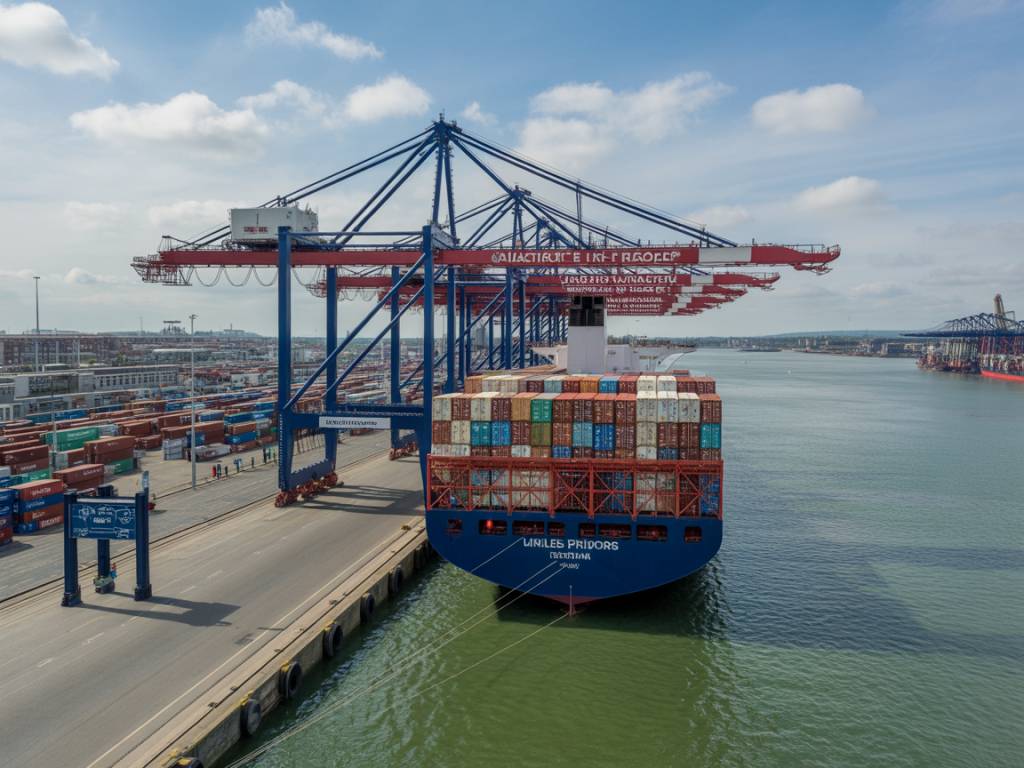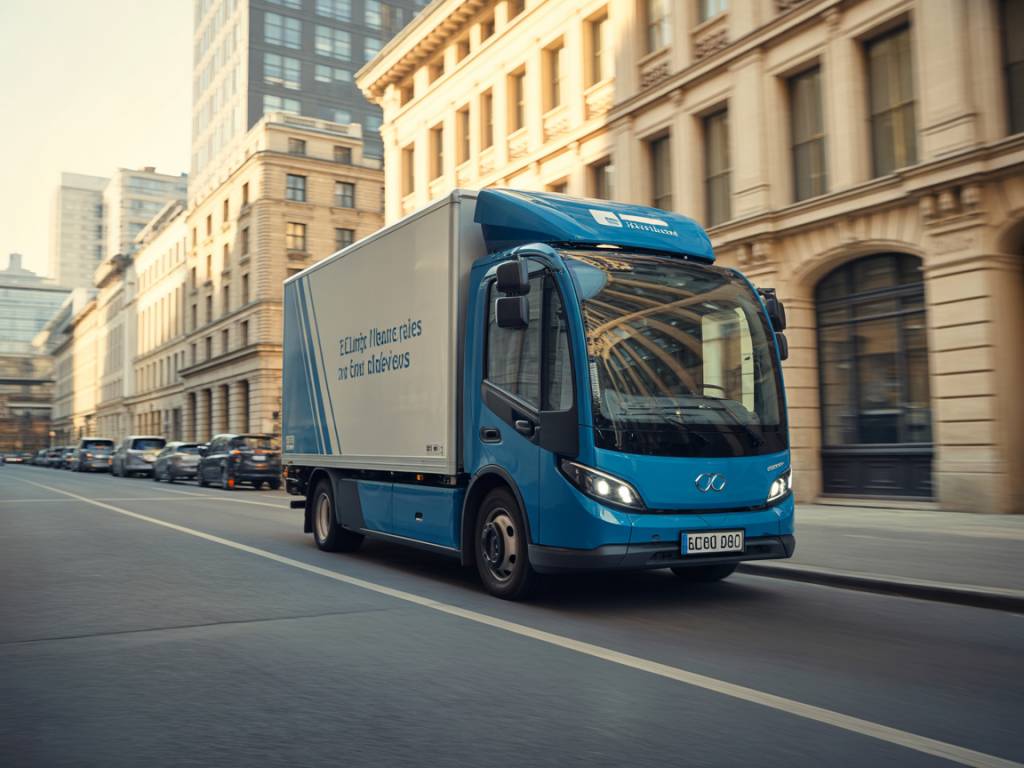The Growing Role of Drones in Warehouse Management
Until a few years ago, drones in logistics were dismissed as gadgets for tech enthusiasts or, at best, niche tools for aerial surveillance. That outlook is changing—and fast. From inventory tracking to safety audits, drone technology is quietly transforming warehouse management, enhancing productivity, precision, and safety. The question is no longer « if » drones will be used in modern warehouses, but « how soon » enterprises can scale them efficiently.
Why Warehouses Are Turning to Drones
Traditional warehouse operations face mounting pressure. Labor shortages, rising customer expectations for real-time updates, and a growing push toward automation are creating a perfect storm. Drones, or unmanned aerial vehicles (UAVs), offer a compelling response to these challenges. Equipped with cameras, sensors, and increasingly sophisticated software, they can navigate complex environments and deliver real-time data with a level of agility that’s hard for human operators or ground-based robots to match.
According to a 2023 McKinsey report, drone deployments in logistics have increased by over 60% in the past three years, with inventory management representing one of the fastest-growing applications. The trend isn’t limited to major integrators like DHL or Amazon. Mid-sized logistics operators, 3PLs, and even retail players are beginning to explore drone use cases, often starting with pilot programs in large distribution centers.
How Drones Improve Inventory Accuracy
Inventory management remains one of the most repetitive and error-prone aspects of warehouse operations. Despite advances in barcode systems and handheld scanners, manual scanning remains a highly labor-intensive process, especially in high-bay storage environments.
This is where drones are proving to be a game-changer. Take the example of Hardis Group’s Eyesee drone, deployed in several European warehouses. These autonomous drones scan barcodes and RFID tags during pre-programmed flights. The result? Inventory audits completed in hours rather than days, with accuracy rates exceeding 98%.
In real-world deployments, companies have reported:
- Inventory counting time reduced by up to 80%
- Labor savings of over 50% during cycle counts
- Minimized need for cherry pickers and scaffolding
One French food logistics player, who requested anonymity, shared that drones allowed them to conduct weekly checks instead of quarterly ones—leading to improved shelf availability and fewer stockouts.
Enhancing Safety and Reducing Downtime
Working at height is one of the most hazardous tasks in warehousing. Utilizing drones mitigates this risk by removing the need for personnel to physically access high storage racks just to verify missing or misplaced items. In one instance, a Belgian 3PL noted a 30% drop in workplace incidents related to inventory checking after incorporating drone-based audits.
Drones are also being used proactively for safety inspections. Companies are programming them to patrol aisles and identify blocked fire exits, check lighting conditions, or even survey structure integrity within older facilities. With AI-powered image recognition, these drones can flag issues in real time—before they escalate into costly disruptions.
Technical Challenges and Real-World Limitations
Of course, drones are not some silver-bullet technology. Their integration into warehouse environments brings its share of challenges. GPS signals are often weak or unavailable indoors, necessitating reliance on visual positioning systems (VPS), LiDAR, or SLAM (Simultaneous Localization and Mapping) algorithms. These systems, while increasingly reliable, still struggle in poorly lit or highly reflective environments.
Moreover, battery life remains a considerable bottleneck. Most drones can operate autonomously for about 10–20 minutes, requiring frequent recharging or complex battery-swapping workflows. Despite vendor efforts to streamline these processes—via docking stations and hot-swap mechanisms—maintaining continuous drone operations over multiple shifts is still a logistical hurdle.
And then there’s the issue of ROI. While the long-term savings are undeniable, initial investments can be high. Between hardware acquisition, infrastructure adaptations, software integration with WMS (Warehouse Management Systems), and staff training, the upfront costs remain a barrier for smaller operators.
Integration with Warehouse Management Systems
One of the keys to making drone deployment scalable is tight integration with enterprise software. A drone that can fly and scan is useful; a drone that feeds real-time data into an ERP or WMS system is transformative.
Several logistics firms are now partnering with drone solution providers that offer plug-and-play APIs. This enables drones to autonomously trigger tasks based on system cues—like initiating a cycle count after a threshold alert, or cross-referencing scanned data with incoming purchase orders to flag discrepancies.
For example, an Austrian logistics provider using Verity drones linked the scanning process directly to SAP, eliminating the need for manual data re-entry and reducing human error by 87% in the first six months.
Automation vs. Augmentation: Are Drones Replacing Humans?
This is a question that comes up frequently. Does drone deployment mean fewer jobs in warehouses? In practice, the technology is more about augmentation than replacement. Drones handle high-frequency, low-value tasks—like barcode reading or location verification—freeing up human staff for exceptions, interventions, and value-added services.
Jessica Nguyen, operations manager for a major German 3PL, summarized the impact neatly: “We didn’t let anyone go after the drones came in. But we did reassign six FTEs to customer-facing quality control tasks. The drones gave us bandwidth.”
In an industry where human capital is both scarce and expensive, reallocating staff to where they’re most impactful may be the real productivity win.
Looking Ahead: What’s Next for Warehouse Drones?
The next generation of drones promises even more capabilities. We’re seeing progress in swarm intelligence—where multiple drones collaborate within the same airspace—as well as in obstacle avoidance, allowing drones to function in dynamic, real-time environments shared with humans and AGVs.
The regulatory framework is also evolving. In the EU, updated drone regulations under EASA (European Union Aviation Safety Agency) are beginning to adapt to indoor operations, which were previously in a gray zone. Standardized airworthiness certifications and clearer training protocols could accelerate widespread adoption.
Economies of scale are helping too. As drone hardware becomes commoditized, prices have dropped by 30–40% in just the last two years. That opens the door for broader penetration beyond flagship DCs to satellite hubs and even some retail store backrooms.
Final Thoughts
Drones in warehouse management are no longer experimental; they’re operational. Forward-thinking companies are already incorporating them into everyday workflows, leveraging their speed, accuracy, and adaptability to create leaner and safer logistics networks.
For warehouse managers and logistics directors, the question is strategic: what pain points in your current operations could be addressed by drone technology? Because while drones won’t replace the warehouse—they’re poised to redefine how it works.




